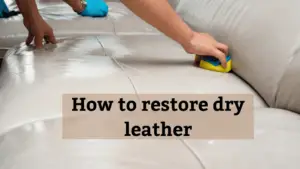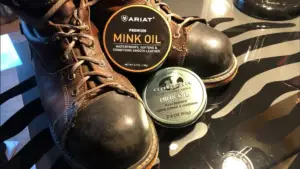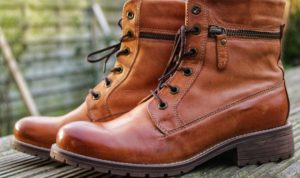Drying Leather: Techniques and Methods for High-Quality Production
Leather, a versatile and highly valued material, undergoes various processes to transform raw hides into durable and luxurious products. One crucial step in leather production is the drying leather process.
Drying leather involves removing moisture from the hides or skins, resulting in a material that is stable, flexible, and ready for further processing.
In this article, we will explore the definition of drying leather and delve into the significance of this process in producing high-quality leather goods.

Definition of drying leather
Drying leather refers to the process of removing moisture from hides or skins, either naturally or through artificial means. It is a crucial step in leather production to ensure the stability, durability, and quality of the final product.
By reducing the moisture content, the leather becomes more resistant to microbial growth, mold formation, and decay.
Importance of the drying process
The drying process plays a vital role in leather production for several reasons.
- Firstly, it helps prevent the growth of bacteria and fungi that can damage the leather.
- Additionally, proper drying ensures that the leather maintains its shape, flexibility, and desirable properties.
- It also prepares the leather for subsequent treatments, such as dyeing and finishing.
Without adequate drying, the leather may become stiff, develop unpleasant odors, or experience structural defects, compromising its overall quality.
Drying leather in the tannery
Below we will consider the primary stages of drying leather in the tannery.
Mechanical dewatering – samming
After the initial treatment of the hides or skins in the tannery, the excess water is removed through mechanical dewatering techniques.
One commonly used method is samming, where the hides are passed through two metal cylinders, known as felted rollers, which help squeeze out the water. This process significantly reduces the moisture content of the leather, making it more suitable for subsequent drying methods.
Air-dried hides or skins – ground drying – frame drying

Once the mechanical dewatering is complete, the hides or skins are subjected to air drying.
This method involves laying the leather on clean, flat surfaces in well-ventilated areas. In some cases, the hides are placed directly on the ground, utilizing natural warmth and airflow.
Alternatively, the leather can be stretched and secured on wooden frames to promote even drying and prevent distortion. Both ground drying and frame drying have been used for centuries and are effective in gradually removing moisture from the leather.
Drying by hanging

Another approach to drying leather is by hanging it. The leather is suspended from hooks or bars, allowing for increased air circulation around the material.
This method is suitable for thin and soft leathers. However, it should be noted that hanging the leather may result in some deformation, as the material is not supported or constrained during the drying process.
Nevertheless, it remains an effective technique for achieving a dry and usable leather product.
Advanced drying techniques
Let’s take a closer look at advanced drying technologies.
Hot air drying – Drying tunnels
Hot air drying in drying tunnels is a modern and efficient method for drying leather. The wet leather is stretched on a toggle frame using toggle clips, and these frames are then transported through drying tunnels.
Inside the tunnels, hot air circulates around the leather, facilitating the drying process. The temperature is typically maintained at around 50-60°C, and the leather can be dried within 8 to 10 hours.
The tension applied during the drying process helps smoothen the grain and stretch the surface, resulting in smoother and firmer leather.

Vacuum drying
Vacuum drying utilizes low pressure and low temperature to evaporate water from the leather. In this method, the leather is placed with the grain side on heated polished metal surfaces, and the vacuum chamber removes the water vapor.
One advantage of vacuum drying is that it allows the liquid flow to draw possible greases from the grain side into the inner zone of the leather. Vacuum drying is efficient and requires minimal manual work, as the hides are simply placed onto the metal plates without clamps or adhesives.
The drying time is relatively short, and the leather remains smooth and flat, enhancing its overall quality.
Glass drying
The glass drying process offers a unique approach to drying leather. In this method, the grain side of moist leather is glued to glass plates, preventing warping or shrinking during the drying process.
The glass panels, with wet leather on both sides, are introduced into a drying tunnel with controlled temperature and air circulation. Within a few hours, the leather is almost completely dry.
This method is advantageous due to its short drying time and the smooth surface it imparts to the leather. However, it is important to note that glass drying is suitable for specific types of leather.
High-frequency drying
High-frequency drying is a specialized technique used to reduce the water content of leather.
After dewatering, the humid leather is exposed to an electric field of high frequencies using a belt conveyor system. The energy density within the humid areas of the leather generates internal heating, leading to the evaporation of water.
This method is employed to achieve precise moisture levels and is particularly useful for specific applications within the leather industry. While not extensively used, high-frequency drying offers a unique approach to efficiently and effectively dry leather.
Advanced drying techniques provide tanneries with options to enhance the drying process, improve the quality of leather, and reduce overall drying time.
Each method offers specific advantages and considerations, allowing tanneries to choose the most suitable technique based on their requirements and the desired characteristics of the final leather product.
Сonclusion
Understanding how to dry leather, the process of leather drying, how long it takes for leather dry, and achieving a dry state are critical considerations in the tannery industry.
By employing appropriate drying techniques such as air drying, ground drying, hanging, hot air drying, vacuum drying, glass drying, or high-frequency drying, tanneries can effectively remove moisture from the leather and ensure its quality and desired characteristics.
The duration of the drying process varies based on factors such as the chosen method and the thickness of the leather. Monitoring the drying progress is essential to determine when the leather has reached the desired dryness.
With this knowledge and careful implementation, tanneries can successfully produce dry leather for various applications.
In summary, the drying of leather is a critical stage in the tannery process, and selecting the appropriate drying method is vital for achieving desired outcomes.
With a combination of traditional and advanced techniques, tanneries can effectively control the moisture content, preserve the quality of the leather, and produce exceptional leather products for various industries and applications.






